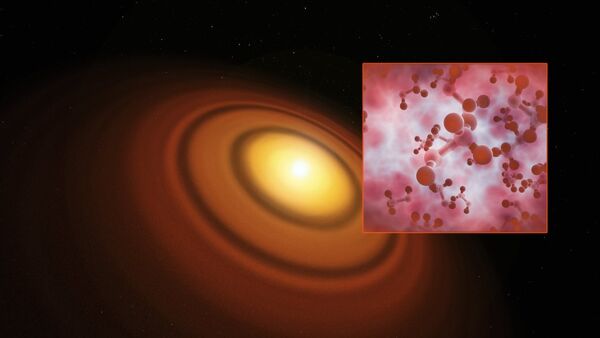The star, known as TW Hydrae, is roughly eight million years old and has about 80 percent of the mass of our Sun. Its protoplanetary disk is approximately 170 light-years away in the constellation of Hydra, making it the closest one to Earth.
Methanol, also known as methyl alcohol, is the first organic molecule to be detected which has an unambiguous origin in ice chemistry processes. This led the researchers to hypothesize that that the gas originated from methanol ice located slightly further away from the star.
"Methanol is an important molecule because it has been shown in laboratory ice experiments to be a feedstock of larger and more complex molecules," Catherine Walsh, an astrochemist at the University of Leeds [UK] and lead author of the study, said in a press release.
"The successful detection of methanol in a protoplanetary disk provides compelling evidence that larger molecules are also present."
Here on Earth, methanol is a toxic chemical used as antifreeze, vehicle fuel or as a solvent for other chemicals. It is also known as "wood alcohol" because it was once mainly produced chiefly as a byproduct of heating and breaking up wood molecules.
"The detection of gas-phase methanol … also provides an intriguing piece of the puzzle regarding the large-scale depletion of CO [carbon monoxide] gas in TW Hya, one of the explanations for which is the conversion of CO ice into more complex molecules, such as methanol," the scientists wrote in their paper, published in the Astrophysical Journal Letters.
Methanol plays a vital role in forming more complex compounds which are fundamental to life, such as amino acid compounds. Its discovery in a protoplanetary disk helps astronomers to understand the chemical processes that occur during the formation of planetary systems and which provide the building blocks for life.
Never miss a story again — sign up to our Telegram channel and we'll keep you up to speed!



